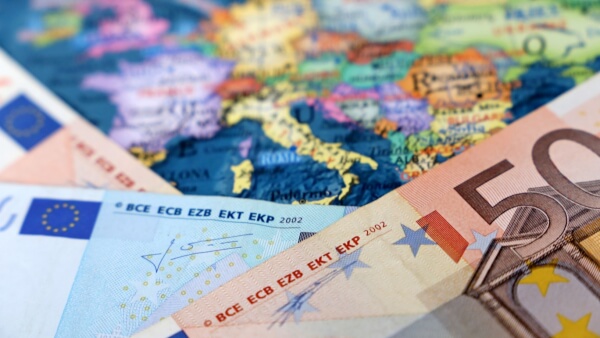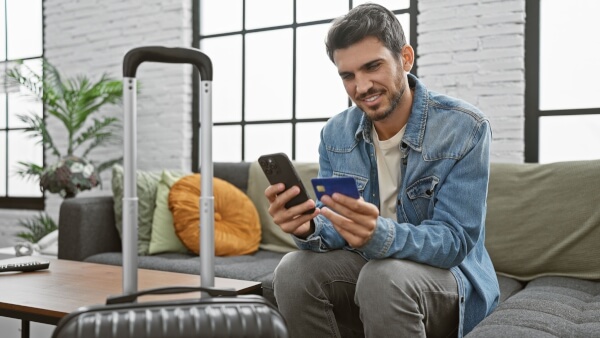Morrisons travel money exchange rate: What you need to know
Looking for a way to manage your spending while travelling? Read our guide on the Morrisons Travel Money exchange rate and other key features.

If you’re heading overseas, a travel card could be a handy solution for covering your spending. They tend to be cheaper to use than your ordinary bank debit card, and can even offer better exchange rates compared to buying currency.
There are lots of travel cards out there, but here we’re going to focus on the Post Office Travel card. We’ll run through what it is and how it works, along with fees, exchange rates, supported currencies and how to apply for one.
And while you’re comparing spending options ahead of your trip, make sure to check out the Wise card. This international card can be used in 150+ countries worldwide, automatically converting your pounds to the local currency at the mid-market rate. There’s only a small fee to pay for the conversion*, or it’s free if you already have the currency in your Wise account.
But for now, let’s focus on the Post Office travel card.
The Post Office Travel card is a prepaid Mastercard that you can load up with up to 23 currencies. You can use it for spending and ATM withdrawals in over 200 countries, in 36 million locations².
Simply top up with your chosen currency before you travel, then spend overseas without needing to convert currency.
The card is contactless and can be managed using the Post Office Travel app.
Here’s your quick at-a-glance guide to the main features and benefits of the Post Office Travel card²:
Post Office travel cards are free to order and there are no charges for paying retailers in the currencies held on your travel money card. So, you can spend in shops, bars and restaurants without any charge - as long as you’re paying with an available balance of a currency supported by the card².
If you do use your card in a country with a local currency that isn’t supported by the card, you’ll be charged a cross-border fee of 3%². For example, if you go to Brazil and use your card at a local restaurant, you’ll be charged the cross-border fee of 3% as Brazilian real isn’t supported by the card.
You’ll also be charged for withdrawing cash from any ATM, even in currencies supported by the card. These ATM fees vary depending on the currency used. For example²:
One last thing to note on the subject of fees. All Post Office Travel cards are valid for up to 3 years. Exactly 12 months after your card expires, you’ll start to be charged a monthly maintenance fee of £2².
Here is also a list of the European countries that charge the highest ATM fees.
The Post Office offers exchange rates that move up and down according to the demand for currencies. So, the exact amount of travel money you’ll receive on your travel card will depend on the rate at the time of your purchase.
You can check the Post Office exchange rates on its website, travel money card app and branches. Keep in mind though that rates may vary whether you’re buying online, via phone or in-store.
The Post Office exchange rate is also likely to include a margin or mark-up on the mid-market rate. This is the rate you’ll find on Google or currency sites like XE.com, and is generally considered to be a fair rate. A margin added on top of this makes the rate worse for you, so you’ll get less EUR, USD or whatever other currency you’re exchanging.
Wise only ever uses the mid-market exchange rate, with no mark-ups or margins. This means that your pounds go further, wherever you’re travelling to.
You can load your Post Office prepaid travel card with funds in any of these 23 currencies²:
You can top up your card with between £50 and £5,000 in any of the currencies listed above. The maximum you can hold is £10,000, plus you can load and spend up to £30,000 on your card each year².
Cash withdrawal limits vary from currency to currency. For example, you can withdraw a maximum of €450 euros or $500 US dollars² in a single transaction.
The Post Office Travel app is free to download from the Google Play and Apple App stores. You can use it to order and activate your card, monitor your balance and top up with currencies. Using the new wallet-to-wallet feature, you can also transfer leftover currency to other currencies of your choice in just a few taps.
You can also buy Post Office travel insurance, book airport parking and access other features through the app.
The Post Office travel card is handy to have if you’re travelling and want to keep your money safe. You won’t need to carry cash around with you, or have to take time out of your trip to change currency.
Paying in local currencies is quick and easy, especially as it’s a contactless card. Plus, you can only spend what’s on it, so this can help you to budget.
As you can store 23 currencies on it, the card is convenient if you travel regularly or are taking multi-destination holidays. If you love visiting far-flung places, however, you might need a card that supports more currencies.
One drawback to consider is the exchange rate. While rates may be competitive (compared to changing money at the airport, for example), the Post Office is likely to include a margin or mark-up on the mid-market rate. There are also charges for using your card at an ATM.
So, it’s important to shop around and compare other travel money cards, as some could offer you a better deal.
Take the Wise card, for example. With this contactless international card, you can spend in 150+ countries and manage 40+ currencies in your Wise account. There are no ATM fees¹ for withdrawing up to £200 a month (2 or less withdrawals) and you’ll get the mid-market exchange rate on every transaction. Note, that Wise will not charge you for these withdrawals, but some additional charges may occur from independent ATM networks.
The Wise card will automatically convert your money to the local currency at the mid-market rate when you spend, for just a small conversion fee*.
You can only get a travel card from the Post Office if you’re aged over 18 and a resident of the UK.
There are three ways to order a Post Office Travel card:
If you’re applying in a branch, you should be able to pick up your card there and then. For applications made online or in the app, you’ll need to wait 2-3 days for your card to be delivered.
You’ll need to activate your travel card before you can use it.
You’ll be given instructions on how to do this in the welcome letter delivered along with your new card.
You can use your Post Office travel card anywhere that accepts MasterCard, online and at ATMs³.
If you’re buying something in person, you’ll need to enter your PIN. If you’re in a country where Chip & PIN isn’t as widely available (such as the USA), you may be asked to sign to verify your purchase instead.
You can also make contactless payments for small amounts, although different countries have different rules and limits for this.
The Post Office’s terms and conditions list a handful of situations in which you shouldn’t use your card. These include the following³:
The easiest way to top up your Post Office Travel card is using the app. If you prefer, you can also top up at the Post Office website or in a local branch³.
If you have unused currency on your card, there are a couple of options available. You may be able to withdraw it at a local Post Office branch or ATM, although fees may apply³.
Alternatively, you can use the new wallet-to-wallet feature in the app³. This lets you transfer unused balance in one currency over to another. For example, you can transfer unused USD to EUR, ready for your next trip to Europe.
You can call the contact centre on 0344 335 0109 when you’re in the UK or +44 (0) 20 7937 0280 when you’re overseas³. Lines are open 24 hours a day, seven days a week.
You can also contact the Post Office Travel Card Customer Services department via the following methods³:
Here’s how to deal with some common problems you might have with your travel card.
If you lose your Post Office currency card or discover that it’s damaged, just phone the contact centre. They’ll block it and send you another. You can also freeze your card using the app.
Firstly, check your account via the app to make sure you have enough money in it. If you have enough to pay for your item or have less than you should have in your account, call the contact centre.
If you can’t remember your travel money card PIN, phone the contact centre. They can issue you with a new one.
You should receive a new card automatically³. If it hasn’t arrived after the expiry date, call the contact centre and they’ll issue you with one.
And that’s pretty much it - everything you need to know about the Post Office Travel card. It’s handy if you don’t want to carry cash around or exchange currency while on holiday. And you can use it in multiple countries, as it supports 23 currencies. The app is another great feature, letting you top up and manage your money on the move.
But just remember to compare exchange rates and fees (especially for those all-important ATM withdrawals) before choosing a travel card for your trip - as you could be getting a better deal elsewhere.
Sources used:
*Please see terms of use and product availability for your region or visit Wise fees and pricing for the most up to date pricing and fee information.
This publication is provided for general information purposes and does not constitute legal, tax or other professional advice from Wise Payments Limited or its subsidiaries and its affiliates, and it is not intended as a substitute for obtaining advice from a financial advisor or any other professional.
We make no representations, warranties or guarantees, whether expressed or implied, that the content in the publication is accurate, complete or up to date.

Looking for a way to manage your spending while travelling? Read our guide on the Morrisons Travel Money exchange rate and other key features.

Should you pay with cash or card in Barbados? A handy guide including cash etiquette, Barbadian ATMs and using your UK card.

Should you pay with cash or card in Albania? A handy guide including cash etiquette, Albanian ATMs and using your UK card.

Discover how to use your Metro Bank debit card overseas. Our guide covers foreign transaction fees, exchange rates, and tips for holiday spending.

Getting ready for a trip? Read our guide on the Barclays travel credit card and plan your holiday spending.

Getting ready for a trip? Read our guide on the HSBC travel credit card and plan your holiday spending.